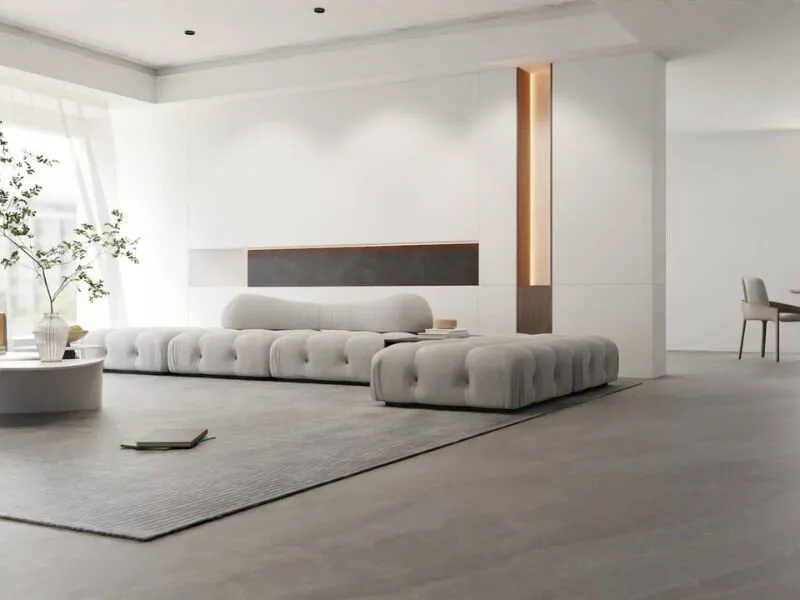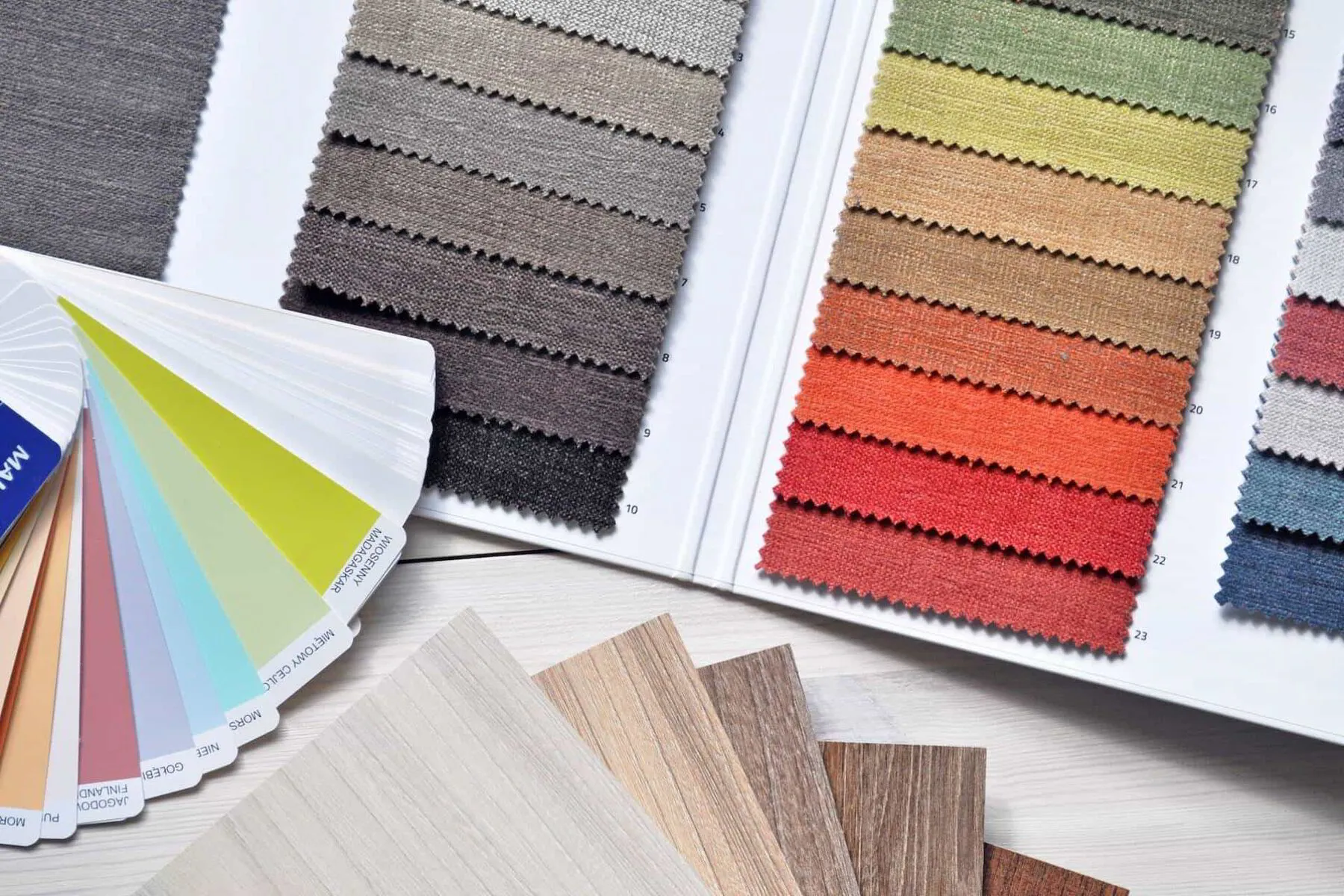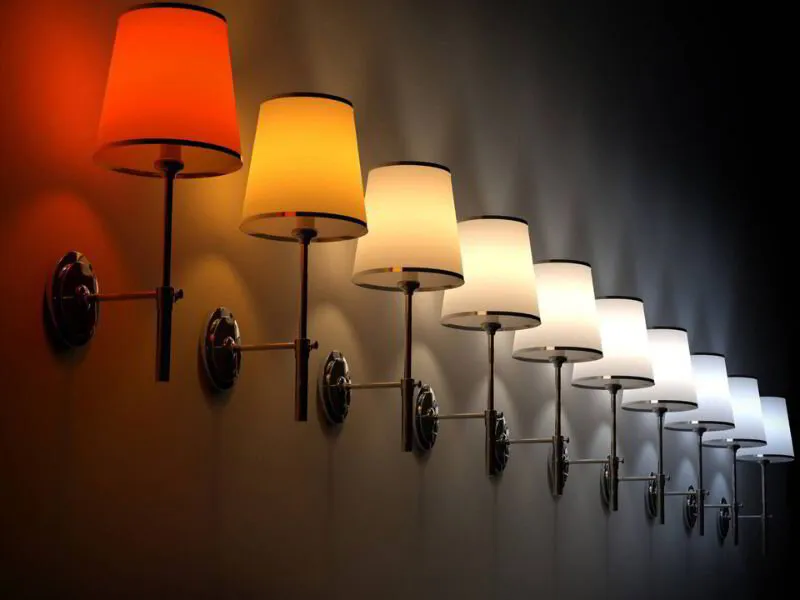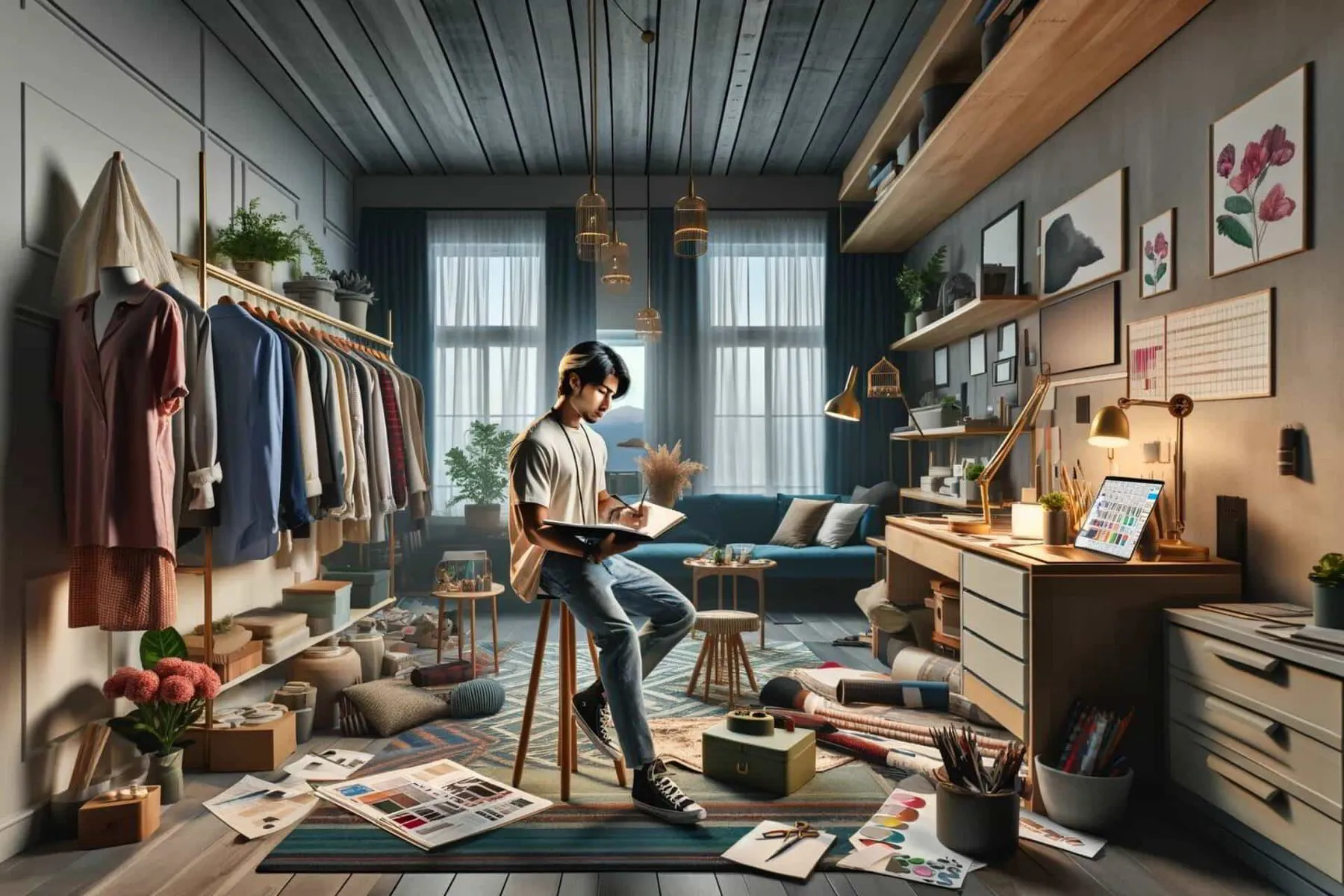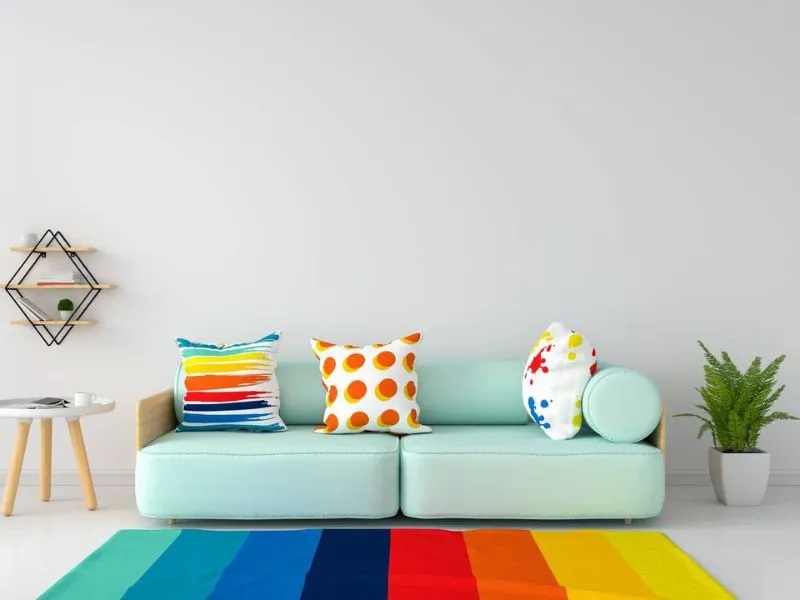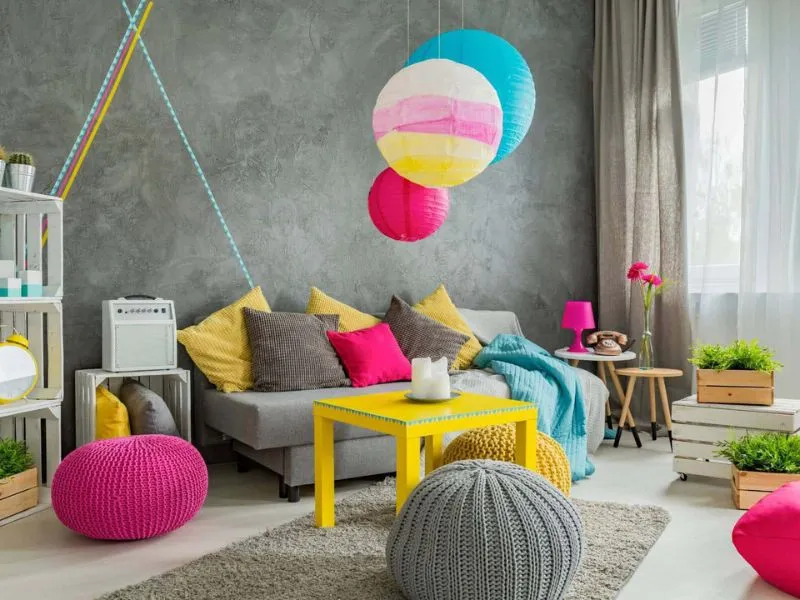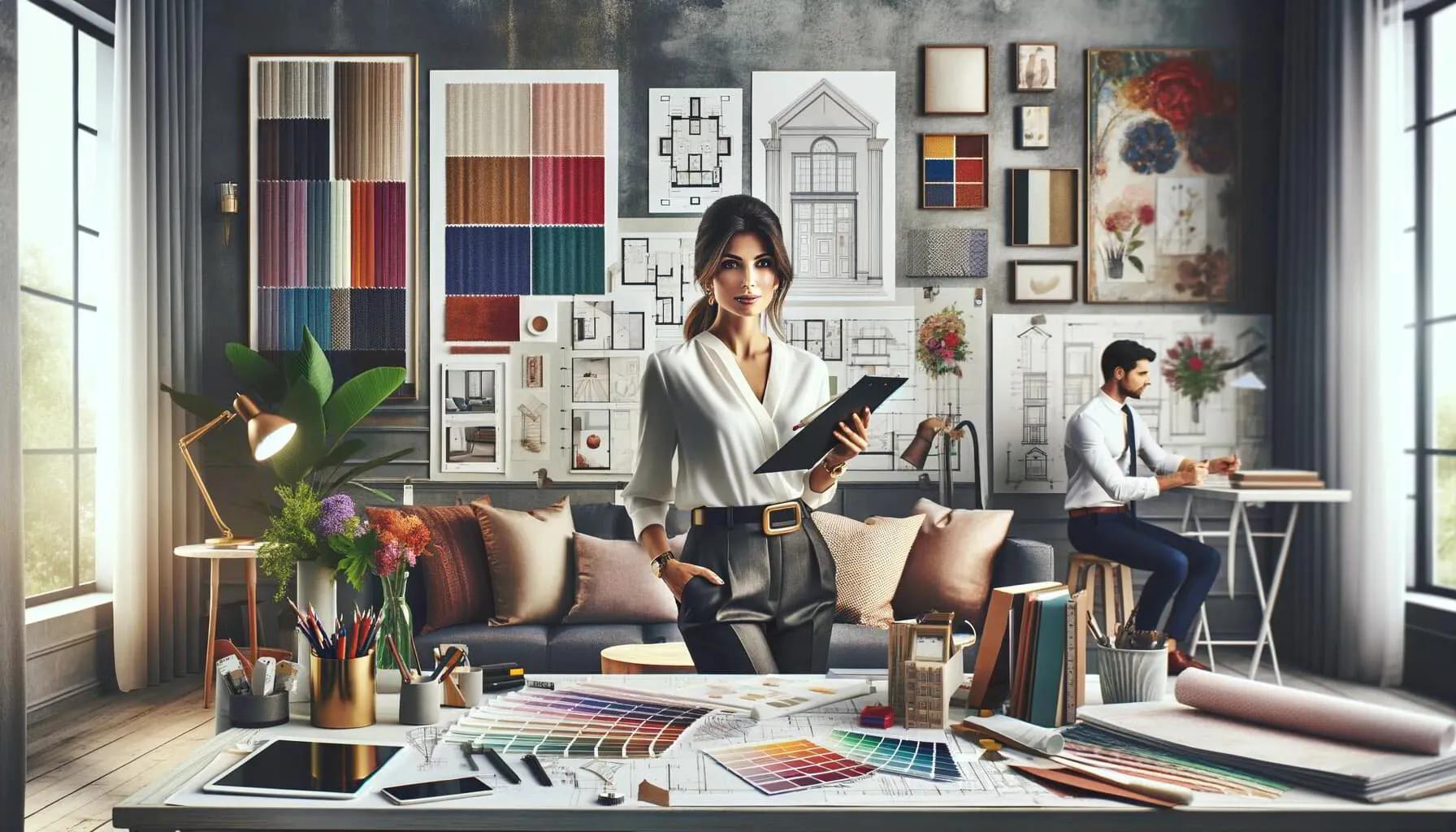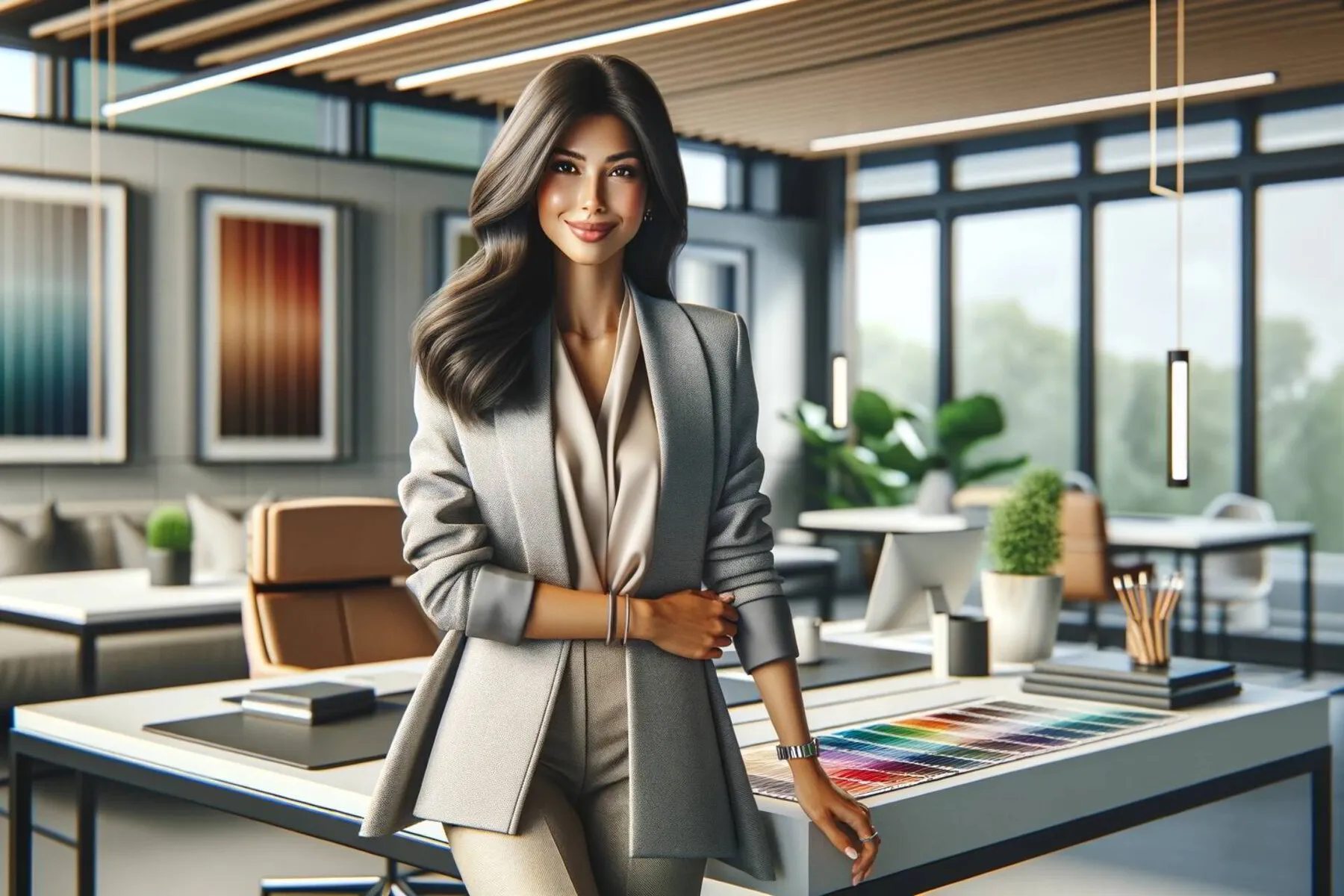In this comprehensive guide, we dive into the essential principles that will empower both seasoned professionals and newcomers to the world of interior design.
From maximizing small spaces to harnessing the psychology of color, lighting, textures, and more, this article is your go-to resource for creating stunning, functional, and harmonious interiors.
Let's embark on a journey through the art and science of interior design, one tip at a time.
📘 Key Takeaways
- Understanding Space and Layout: Crucial for harmonizing room elements and maximizing space efficiency.
- Effective Furniture Arrangement: The key to creating a balanced and functional space focusing on the room's focal point.
- Lighting and Ambiance: Essential in shaping the mood and atmosphere of a space through natural and artificial light sources.
- Textures and Materials: Tactile elements that add depth and character to interior spaces.
- Functional and Decorative Accessories: Provide personality and functionality, transforming spaces into welcoming environments.
- Personalization and Style: Central to transforming a house into a home, reflecting individual tastes and preferences.
- Practical Considerations: Focus on optimizing storage, durability, and budget-friendly choices in interior design.
- Trends and Timelessness: Balancing contemporary trends with classic design for enduring style.
- Psychological Impact of Design: How design choices influence emotions and well-being.
- Professional Insights and Tricks: Expert techniques and tips for achieving cohesive and captivating interiors.
1. Understanding Space and Layout
Understanding space and layout is crucial in interior design, focusing on harmonizing room elements. It involves strategically organizing a room for functionality and aesthetic appeal, considering the balance between furnished and open areas.
Effective layouts account for the room's purpose, movement flow, and furniture placement to architectural features. This approach ensures efficient use of space, enhancing comfort and practicality in everyday living.
Each room's unique dimensions are maximized through thoughtful planning, transforming any area into a cohesive and inviting space.
📘 Related Reading: The Benefits of Good Space Planning in Interior Design
Maximizing Small Spaces
Maximizing small spaces involves clever design strategies to create the illusion of more room while enhancing functionality.
Utilizing multi-purpose furniture, like sofa beds or ottomans with storage, is key. Vertical space is often underused; tall shelving units or wall-mounted storage can free up floor area.
Mirrors strategically placed can visually expand the space and increase light. Opting for a light color palette and minimalistic decor helps avoid a cluttered feel. Every inch counts in a small space, so thoughtful, space-saving solutions are essential for maximizing the limited area.
Effective Furniture Arrangement
Effective furniture arrangement creates a balanced, functional, and inviting space. It starts with identifying the room's focal point, such as a fireplace or a large window, and arranging furniture for optimal engagement.
Keeping a clear path for movement is crucial to avoid a cramped feeling. In living rooms or areas, furniture should facilitate conversation, with chairs and sofas facing each other.
Ensure unobstructed access to chairs and tables in the dining area and workspaces. Utilizing the room's shape and size, furniture should be spaced evenly, avoiding overcrowding while maintaining a cohesive and harmonious look.
The Role of Proportions and Scale
The role of proportions and scale in interior design is pivotal in creating a balanced and aesthetically pleasing space. It involves selecting furniture and decor that fit the size of the room and relate well to each other.
Large, bulky furniture can overwhelm a small room, while too-small pieces can appear lost in a spacious area. The key is maintaining harmony, where each item contributes to the overall scale without dominating.
Proportions also play a role in ensuring adequate space between furniture, allowing the same room for comfortable movement and interaction within the room.
📘 Related Reading: How to Use Proportion and Scale in Interior Design
2. Color Schemes and Palettes
Color schemes and palettes are crucial in interior design, significantly influencing a room's mood and perceived size.
Beyond personal preference, choosing colors requires understanding their psychological impact and interplay. The right mix can energize or soothe the atmosphere, creating a visually harmonious environment that reflects personal style and elevates the space's aesthetic.
📘 Related Reading: How To Use Color Theory For Interior Design
Choosing a Harmonious Color Scheme
To choose a harmonious color scheme, start with a base color that sets the desired mood, then incorporate complementary or analogous shades for depth.
Adhere to the 60-30-10 rule for balance: 60% dominant color, 30% secondary, and 10% accent. This method creates a cohesive and visually appealing space, ensuring a unified and well-considered interior design scheme aesthetic.
Impact of Color on Mood and Atmosphere
Color significantly influences mood and atmosphere in interior spaces. Warm hues like reds and yellows evoke energy and warmth, ideal for lively areas. Cool tones such as blues and greens instill calmness, suitable for restful spaces.
Neutrals offer flexibility, creating either a soothing or grounding effect. Thoughtful use of color can completely transform a room's ambiance, enhancing the emotional well-being of its inhabitants by aligning the space's mood with its intended purpose.
Monochromatic vs. Complementary Colors
In interior design, choosing between monochromatic and complementary colors can drastically affect the mood and aesthetics of a space.
Monochromatic color schemes involve variations of a single hue, creating a harmonious and serene atmosphere.
On the other hand, complementary colors, which sit opposite each other on the color wheel, provide contrast and vibrancy, injecting energy and drama into a room.
The choice ultimately depends on the desired ambiance: monochromatic for tranquility and unity and complementary for dynamic and striking interiors.
3. Lighting and Ambiance
Lighting plays a pivotal role in shaping the ambiance of any space. In this section, we'll explore the transformative power of light, from harnessing natural sunlight to selecting the perfect artificial lighting elements to create the desired mood and atmosphere in your interior design.
📘 Related Reading: The Magic of Interior Lighting Design: A Complete Guide
The Importance of Natural Light
Natural light is a cornerstone of effective interior design. It not only enhances the aesthetic appeal of a space but also positively impacts our well-being. Abundant natural light can make rooms feel more spacious, inviting, and energetic.
Additionally, it can reduce the need for artificial lighting during the day, which is both eco-friendly and cost-effective.
Harnessing solar lighting through well-placed windows, skylights, and reflective surfaces is a design choice that can significantly elevate the comfort and livability of any room.
Layering Different Types of Lighting
Layering different types of lighting is a design technique that adds depth and versatility to interiors. Combining ambient, task, and accent lighting creates layers that cater to various needs and moods.
Ambient lighting sets the overall tone, task lighting serves functional purposes, and accent lighting highlights specific areas or objects.
This harmonious blend ensures functionality and aesthetics, allowing you to adapt the lighting to different activities and create a dynamic atmosphere in your space.
Choosing the Right Lightbulbs
Selecting the right lightbulbs is crucial for achieving the desired ambiance and energy efficiency. Consider factors like color temperature (warm or cool), lumens (brightness), and energy efficiency (LEDs, CFLs).
Warm white bulbs (2700-3000K) create a cozy atmosphere, while cool white (3500-4100K) suits task-oriented spaces. LED bulbs are long-lasting and energy-efficient, making them an eco-friendly choice.
By understanding these factors and making informed choices, you can optimize lighting to match your space's functionality and aesthetic.
4. Textures and Materials
Textures and materials are the tactile elements that breathe life into interior spaces.
This section will explore the art of mixing and matching textures, the impact of natural vs. synthetic materials, and how these choices serve as crucial design elements in crafting a captivating and inviting environment.
📘 Related Reading: How to Use Texture in Interior Design for Maximum Impact
Mixing and Matching Different Textures
Mixing and matching different textures is a design strategy that adds depth and richness to interiors.
Combining smooth and rough textures, such as sleek glass surfaces with tactile fabrics or rugged stone with soft rugs, creates visual interest and sensory contrast.
This approach stimulates the senses and contributes to a harmonious and visually appealing environment, making spaces feel more dynamic and inviting.
The Use of Natural vs. Synthetic Materials
The choice between natural and synthetic materials in interior design significantly impacts the character and sustainability of a space. Natural materials like wood, stone, and leather offer a timeless and organic charm, connecting us to the natural world.
In contrast, synthetic materials, such as laminates or faux leather, offer durability and versatility while reducing environmental impact.
Selecting between them depends on your design goals, budget, and ecological considerations, ultimately shaping the overall look and feel of the space.
Texture as a Design Element
Texture is a potent design element that engages our sense of touch and sight. It adds depth and dimension to interiors, influencing the overall ambiance.
Smooth textures, like glass or polished metals, exude modernity and elegance, while rough textures, like exposed brick or rustic wood, evoke warmth and character.
Combining various textures strategically allows interior designers to create tactile contrast, making spaces visually captivating and inviting.
Texture also plays a crucial role in defining the style and personality of a room, from sleek minimalism to cozy, eclectic spaces.
5. Functional and Decorative Accessories
Functional and decorative accessories are the finishing touches that breathe life into your interior design.
From carefully chosen art pieces to clever storage solutions, these elements infuse personality and functionality into your living spaces, transforming them into truly welcoming and efficient environments.
Selecting Art and Decorative Pieces
Choosing art and decorative pieces is an art in itself. These elements bring your unique style and personality to the forefront of your interior design.
Whether it's a striking painting, a collection of sculptures, or even carefully selected wall decor, these pieces serve as focal points and conversation starters.
They infuse color, texture, and character into your space, creating a visual narrative that reflects your taste and passions while enhancing the overall aesthetic appeal of your home.
Incorporating Plants and Greenery
Incorporating plants and greenery into your interior design adds a breath of fresh air and a touch of nature to your space.
These living elements infuse rooms with vibrant energy and improve air quality while enhancing aesthetics. From small succulents on shelves to statement potted plants in corners, they bring life and balance to any decor style.
The lush greenery creates a sense of tranquility and connection to the outdoors, transforming your home into a serene and inviting oasis.
Accessorizing Without Clutter
Accessorizing without clutter is a delicate balance in interior design. The key is carefully curating and placing decorative elements that enhance the space without overwhelming it.
Minimalism and thoughtful arrangement are essential. Choose accessories that resonate with your design theme and personal style, ensuring they complement the room's function.
Proper storage solutions, like shelves and cabinets, help keep clutter at bay, allowing the chosen accessories to shine and maintain a harmonious and visually pleasing environment.
6. Personalization and Style
Personalization and style are the heart and soul of interior design. Your unique tastes, preferences, and cherished items transform a house into a home.
In this segment, we explore how to infuse your distinctive personality into your living spaces and craft interiors that resonate with your individual style.
📘 Related Reading: Top 30 Home Interior Design Ideas For A Fresh Look
Reflecting Personal Style in Interiors
Reflecting personal style in interiors involves a thoughtful blend of colors, patterns, furniture, and decor that mirror your preferences and personality.
Whether your style is modern and minimalist, traditional and ornate, or somewhere in between, your home should be a canvas for self-expression.
Incorporating personal mementos, heirlooms, or cherished items adds sentimental value and tells a unique story, making your space your own. The result is a beautiful living environment that feels authentic and comfortable for you.
The Role of Artwork and Personal Collections
Artwork and personal collections serve as windows to your soul in interior design.
Whether it's a curated gallery wall of your favorite paintings or a display of cherished collectibles, these elements infuse your space with character and individuality.
They spark conversations, evoke emotions, and provide a glimpse into your life and passions.
These pieces of personal significance turn a house into a home, making it uniquely yours and enhancing the overall warmth and personality of your family room and your living environment.
Creating Themed Rooms
Creating themed rooms is a creative approach to interior design that allows you to tell a specific story or evoke a particular mood in a space.
Whether it's a coastal-themed bedroom with nautical decor and serene blues or a vintage-inspired living room with retro furniture and accessories, themed rooms provide cohesion and a sense of purpose.
By carefully selecting elements that align with the chosen theme, you can transform individual rooms within your home into distinct and immersive experiences.
Storage Solutions for Neat Interiors
Effective storage solutions are the unsung heroes of interior design, providing a clutter-free environment. Utilize built-in shelves, hidden cabinets, and multifunctional furniture to maximize space.
Consider open shelving for display and closed storage for concealing items. Customized closets and under-bed storage can be game-changers.
By efficiently organizing and concealing belongings, you create an aesthetically pleasing, uncluttered atmosphere, allowing the beauty of your design to shine while simplifying daily life.
Durability and Maintenance of Materials
Prioritizing durability and low-maintenance materials is essential for long-lasting, hassle-free interiors. Choose materials that can withstand wear and tear, especially in high-traffic areas.
Consider factors like stain resistance, ease of cleaning, and resistance to fading or damage from sunlight.
Durable surfaces, such as hardwood floors and quartz countertops, save money on repairs and ensure that your interior design retains its beauty and functionality for years to come with minimal effort.
Budget-Friendly Design Ideas
Budget-friendly interior design ideas empower you to create stylish interiors without breaking the bank. Consider repurposing or upcycling existing furniture and decor, hunting for affordable finds at thrift stores or online marketplaces, and DIY projects.
Opt for cost-effective alternatives, such as laminate flooring instead of hardwood or peel-and-stick wallpaper, for a quick room makeover.
Clever budgeting and strategic choices can result in a stunning, wallet-friendly interior that proves excellent design doesn't always demand a hefty price tag.
Balancing Trendy Elements with Classic Design
Balancing trendy elements with classic design is an art that ensures your interior remains relevant and appealing.
While embracing the latest fads is tempting, timeless elements like neutral colors, quality furniture, and traditional architectural features provide a stable foundation. Integrate trends through accessories, removable decor, or accent pieces, allowing for easy updates as styles evolve.
This harmony between the timeless and the trendy guarantees that your space remains a reflection of both your current tastes and enduring sophistication.
Adapting to Changing Design Trends
Adapting to changing design trends is essential to keep your interiors fresh and in line with contemporary aesthetics.
Follow industry publications, visit design shows, and embrace new color palettes, materials, and furnishings. However, don't feel compelled to overhaul your entire space with each trend.
Instead, focus on easily replaceable elements like throw pillows, artwork, or accessories. This flexibility allows you to stay on-trend without significant investments, ensuring your home evolves while staying true to your style.
Creating a Timeless Interior Design
Creating a timeless interior design involves selecting enduring elements that transcend fleeting trends. Opt for neutral color palettes, classic furniture pieces, and timeless architectural details.
Incorporate quality materials and craftsmanship that age gracefully. Avoid overly stylized or gimmicky decor choices.
The result is a space that feels elegant and sophisticated throughout the years, remaining relevant and appealing even as design trends come and go. Timelessness ensures that your interior remains a sanctuary of enduring beauty and comfort.
9. Psychological Impact of Design
How the arrangement of spaces, colors, and materials can profoundly influence our emotions, well-being, and daily lives.
This section delves into the fascinating realm of interior psychology, exploring the science behind design choices that shape our mental and emotional experiences within our homes.
Design for Relaxation and Wellbeing
Designing for relaxation and well-being involves creating spaces that promote mental and physical health. Consider soothing color schemes, ergonomic furniture, and clutter-free layouts.
Integrate natural elements like plants and use soft, comfortable textures. Adequate lighting, both natural and artificial, plays a pivotal role.
By prioritizing calmness, comfort, and stress reduction, your interiors become havens that rejuvenate the mind and body, fostering a sense of peace and overall well-being in your daily life.
The Influence of Color Psychology
Color psychology is the study of how colors affect human emotions and behavior. In interior design, selecting the right colors can profoundly impact the atmosphere of a space.
For example, soothing blues and greens promote relaxation, while vibrant reds and yellows can energize and stimulate.
Neutral tones like beige and gray offer versatility. By understanding color psychology, interior designers can strategically use colors to create desired moods and enhance the psychological well-being of occupants in a space.
Creating a Welcoming Atmosphere
Creating a welcoming atmosphere in your interior design involves thoughtful choices that make visitors feel instantly comfortable.
Warm and inviting colors, comfortable seating arrangements, and the strategic placement of accessories all contribute. A balance of personal touches and universal appeal, such as cozy throws or welcoming entryways, fosters a sense of hospitality.
Whether for family, friends, or guests, a welcoming interior sets the stage for meaningful interactions and leaves a lasting positive impression.
10. Professional Insights and Tricks
In this segment, we unlock the expert techniques and insider tips professionals use to achieve cohesive, captivating interiors.
Discover the art of impeccable design execution and learn common pitfalls to avoid, helping you navigate your interior projects with confidence.
Interior Designer Tips for a Cohesive Look
1. Color Consistency:
Maintaining a consistent color palette throughout your space creates visual harmony and flow.
How? Choose a dominant color and use it as a base for walls and larger furniture pieces. Add complementary colors in smaller doses through decor items like cushions, curtains, and artwork.
2. Scale and Proportion:
Properly scaled furniture and decor items ensure a balanced and visually pleasing arrangement.
How? Measure the dimensions of your room and furniture before purchasing. Use a mix of furniture sizes to create depth and visual interest.
3. Balance Textures:
Mixing textures adds depth and tactile appeal to a contemporary space while maintaining a visual equilibrium.
How? Pair smooth textures (like glass or metal) with rough ones (like wood or textured fabrics). Balance shiny and matte finishes for contrast.
4. Focal Points:
Identify and highlight key focal points to draw attention and create a sense of purpose in each room.
How? In the living room, arrange furniture around the fireplace or a striking piece of artwork. Make the bed the focal point in the bedroom with stylish bedding and headboard.
5. Transitional Elements:
Transitional elements ensure smooth visual transitions between different areas of your home.
How? Use area rugs to define spaces in open floor plans. Consistency in flooring materials can also help maintain a seamless flow.
6. Edit and Refine:
Editing and refining your decor choices prevent overcrowding and maintain a clean, cohesive look.
How? Regularly assess your decor items and remove anything that no longer contributes to the overall design. Less clutter creates a more cohesive environment.
7. Consider Flow:
Consider the flow of movement within your space to ensure clear pathways and easy access to essential areas.
How? Arrange furniture to facilitate natural traffic flow, keeping pathways clear and unobstructed.
8. Lighting Harmony:
A balanced lighting plan includes ambient, task, and accent lighting to enhance cohesiveness.
How? Install dimmer switches to control the intensity of your lighting. Use layered lighting to create different moods for various activities.
By implementing these actionable tips based on interior designer insights, you can achieve a cohesive and visually appealing interior design in your home.
Common Interior Design Mistakes to Avoid
Avoiding common interior design mistakes is crucial to achieving a successful and harmonious living space. Here are some pitfalls to be mindful of:
1. Ignoring Functionality
Focusing solely on aesthetics without considering functionality can lead to impractical designs. Ensure that your design meets your daily needs and suits your lifestyle.
How? Before making any design decisions, list your functional requirements for each space and prioritize them in your design plan.
2. Overlooking Lighting
Inadequate or poorly planned lighting can make a space feel dull or uncomfortable. Don't underestimate the importance of good lighting design.
How? Incorporate a mix of ambient, task, and accent lighting to create layers of illumination that enhance both functionality and ambiance.
3. Ignoring Scale and Proportion
Furniture too large or too small for a room disrupts visual balance and can make the space feel awkward.
How? Measure your space accurately and choose furniture that suits the room's scale. Use a mix of furniture sizes for variety.
4. Neglecting Color Harmony
Choosing colors without considering their interaction can result in clashes or an unbalanced color scheme.
How? Create a cohesive color palette by selecting a dominant color and complementary shades. Test paint samples and fabric swatches in the actual space to see how they look under different lighting conditions.
5. Overdecorating
Too many accessories and decor items can create visual clutter and overwhelm the space.
How? Practice restraint by periodically editing and removing items that no longer contribute to the overall design. Less can often be more.
6. Ignoring Natural Elements
Neglecting the incorporation of natural elements like plants and natural light can lead to a lack of vitality in your space.
How? Bring in houseplants to add freshness and utilize windows to maximize natural light, making the space feel more vibrant and inviting.
7. Rushing the Process
Impulsively buying furniture or decor without a clear design plan can lead to a disjointed and unsatisfying outcome.
How? Take your time to plan and research. Create a mood board, gather inspiration, and carefully consider each purchase in the context of your overall design concept.
8. Disregarding Budget
Overspending on decor items or materials can lead to financial stress and limit your ability to complete the project as planned.
How? Establish a realistic budget early in the design process and stick to it. Prioritize essential items and allocate funds accordingly.
9. Neglecting Personal Style
Copying trends without incorporating your personal style can result in a space that feels impersonal and lacks character.
How? Infuse your personality and unique preferences into the design by incorporating personal touches, whether it's through artwork, family heirlooms, or custom-made pieces.
10. Forgetting About Maintenance
Choosing high-maintenance materials or finishes can lead to frustration and extra upkeep.
How? Consider the level of maintenance required for materials and finishes, especially in high-traffic areas, and choose options that align with your willingness to maintain them.
By being aware of these common interior design mistakes and taking proactive steps to avoid them, you can create a more functional, aesthetically pleasing, and harmonious living space that truly reflects your style and needs.
When to DIY vs. Hiring a Professional
Deciding whether to take on an interior design project or hire a professional can greatly impact the outcome. Consider the following factors:
DIY (Do It Yourself):
- Budget Constraints: DIY projects can be cost-effective, especially if you have the skills and time.
- Personal Satisfaction: Enjoyment of hands-on work and a sense of accomplishment can be fulfilling.
- Small-Scale Projects: Simple updates like painting or minor decor changes are often suitable for DIY.
✅ PRO TIP: Assess your skills, available time, and the project's complexity to determine whether DIY is feasible. Start small and gradually take on more significant tasks as your confidence and experience grow.
Hiring a Professional:
- Complex Projects: For complex renovations, architectural changes, or whole-home designs, professionals bring expertise and experience.
- Time and Convenience: Professionals can save time and effort by managing the project efficiently.
- Access to Resources: Interior designers have access to a network of suppliers and resources that can result in cost savings and unique design solutions.
✅ PRO TIP: Consult with a qualified interior designer or architect for larger or more intricate projects. Choose professionals whose style aligns with your vision, and check references to ensure a successful partnership.
In many cases, a combination of DIY and professional services may be the ideal approach, with DIY for smaller, manageable tasks and professionals for more extensive projects. Ultimately, the choice depends on your goals, skills, budget, and project scale.
Frequently Asked Questions
How can I incorporate whimsical elements into my interior design?
Add playful elements like whimsical wallpapers or quirky art to create a unique space. Balance these with neutral tones and classic designs to maintain harmony. Whimsical elements stimulate creativity and add fun.
What are some practical ways to repurpose old furniture or materials?
Upcycle by transforming old furniture with paint or new upholstery or repurposed materials into decor items. For instance, wooden pallets can become a coffee table, adding character and sustainability to your design.
How do I choose the proper lighting for different rooms in my home?
Select lighting based on room function and ambiance. Use brighter lighting in workspaces and softer lighting in living areas. Layer ambient, task, and accent lighting, and opt for energy-efficient LEDs.
Can you suggest some natural elements to incorporate into home interiors?
Introduce indoor plants, wooden furniture, or stone accents to bring nature indoors. These elements enhance aesthetics, improve air quality, and create a calming atmosphere, complementing your overall design style.
What are some tips for creating a focal point in a room?
Identify a feature like a fireplace, artwork, or unique furniture as a focal point. Arrange other elements around it to draw attention and create a cohesive look, organizing the space visually.
How do I set a cohesive color scheme for my home?
Choose a primary color complemented by secondary and accent colors using the 60-30-10 rule. Consistency in color creates harmonious flow and considers colors that evoke the desired mood.
What are the benefits of choosing quality over quantity in interior design?
Invest in high-quality, durable pieces for longevity and better aesthetics. Quality pieces can become focal points and are often more sustainable. Plan and save for pieces that enhance your space, avoiding impulse buys.
How can I use plants effectively in my interior design?
Choose plants based on the light and environmental conditions of your space. Use them as natural decor to purify the air and add color. Opt for low-maintenance plants and position them to complement the room's design.
What are some creative ways to use wallpapers and paint to transform a room?
Use bold wallpaper or paint for statement walls or to add depth. Experiment with patterns and colors that reflect your style, with wallpapers for feature walls and paint to unify or separate areas.
How do I ensure my furniture and decor are in the correct scale and proportion?
Measure your space and choose furniture that fits without overcrowding. Mix different sizes and heights of furniture and decor, using larger pieces in spacious areas and smaller pieces in compact spaces.
Final Thoughts on Interior Design Tips
In the world of interior design, knowledge is your greatest asset. You can confidently embark on your design journey by embracing these interior design tips and avoiding common pitfalls.
Remember that every space is unique, and your personal touch makes it uniquely special.
Whether crafting a cozy corner or transforming an entire home, let your creativity shine and enjoy turning your vision into reality.
And if you want to learn more about interior design and its exciting possibilities for your home, don't forget to check out the rest of our interior design blog!
Thanks for reading our article on how to become an interior designer!
📘 Related Reading: The Ultimate Glossary of Interior Design Terms
Lara Harding
Lara is a supporting author @ DIY Home Comfort. She's an experienced interior designer and decorator and a full-time mom. You can find out more about her here.

